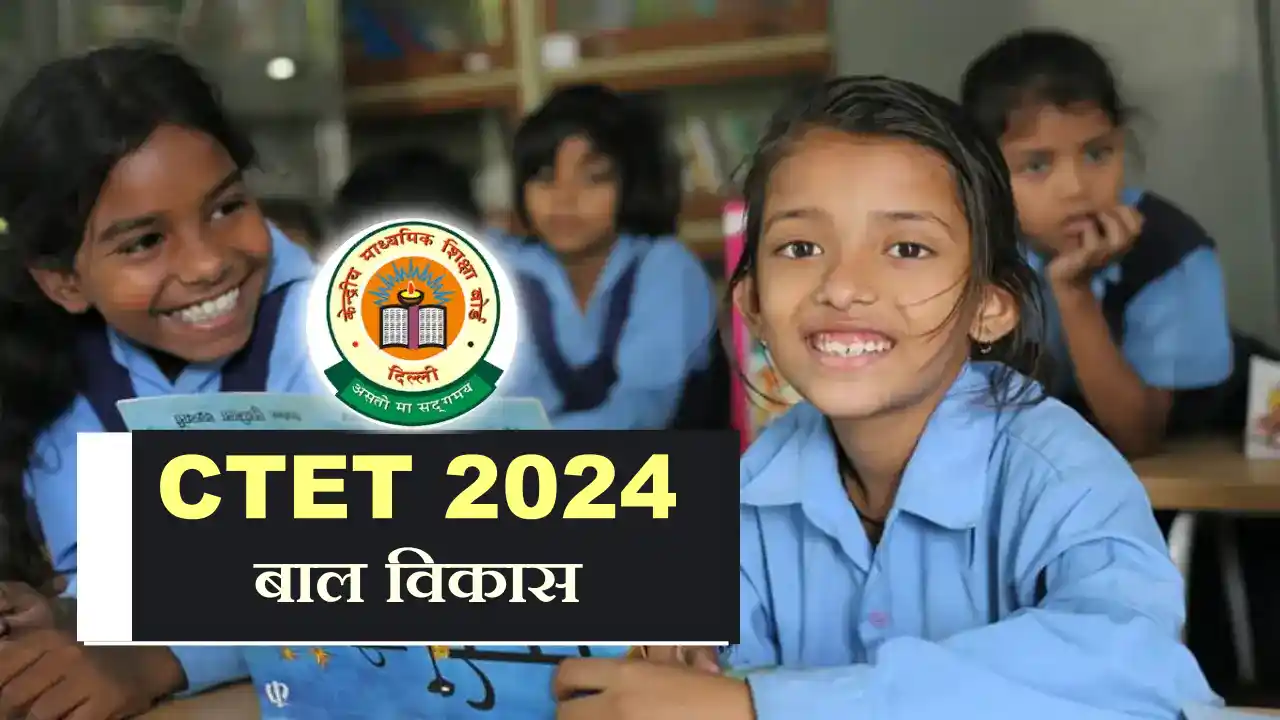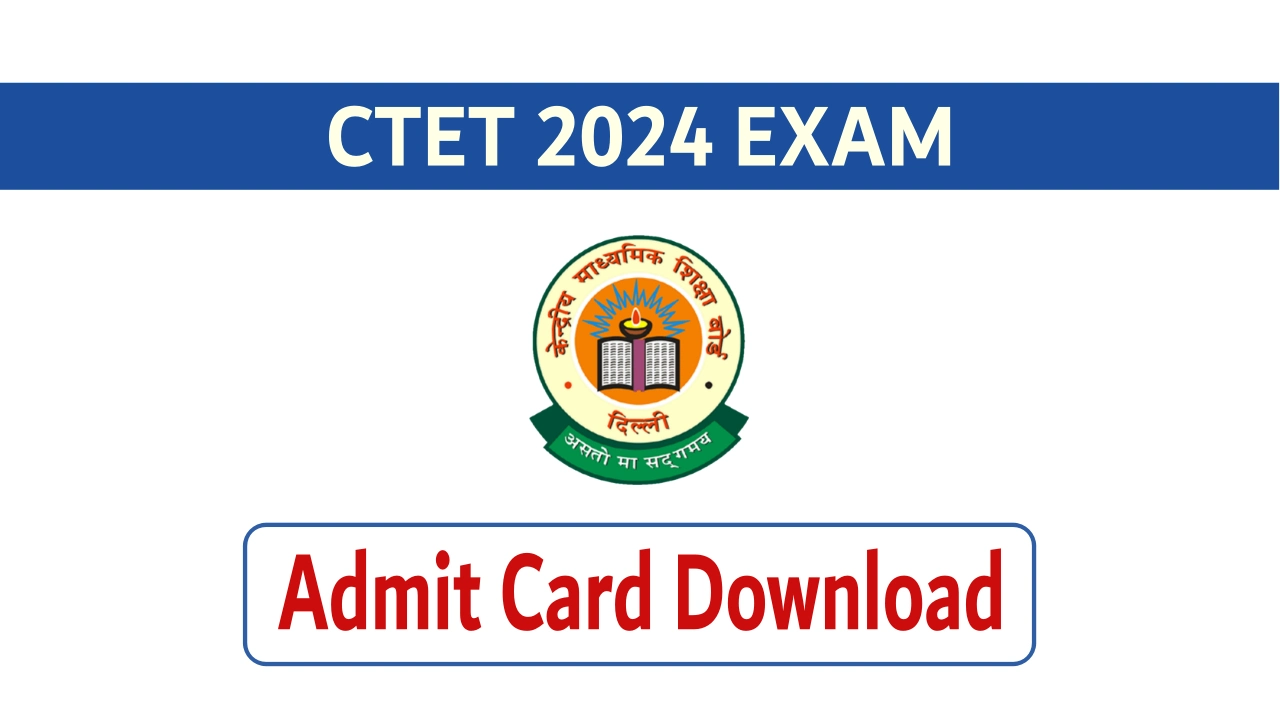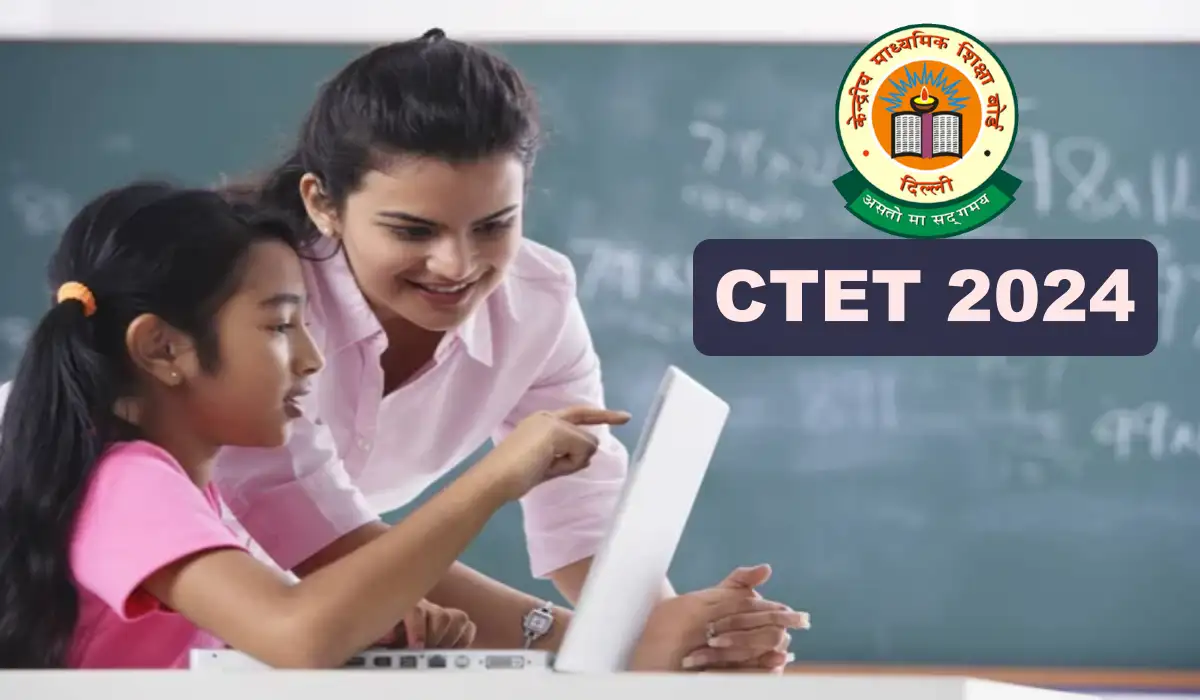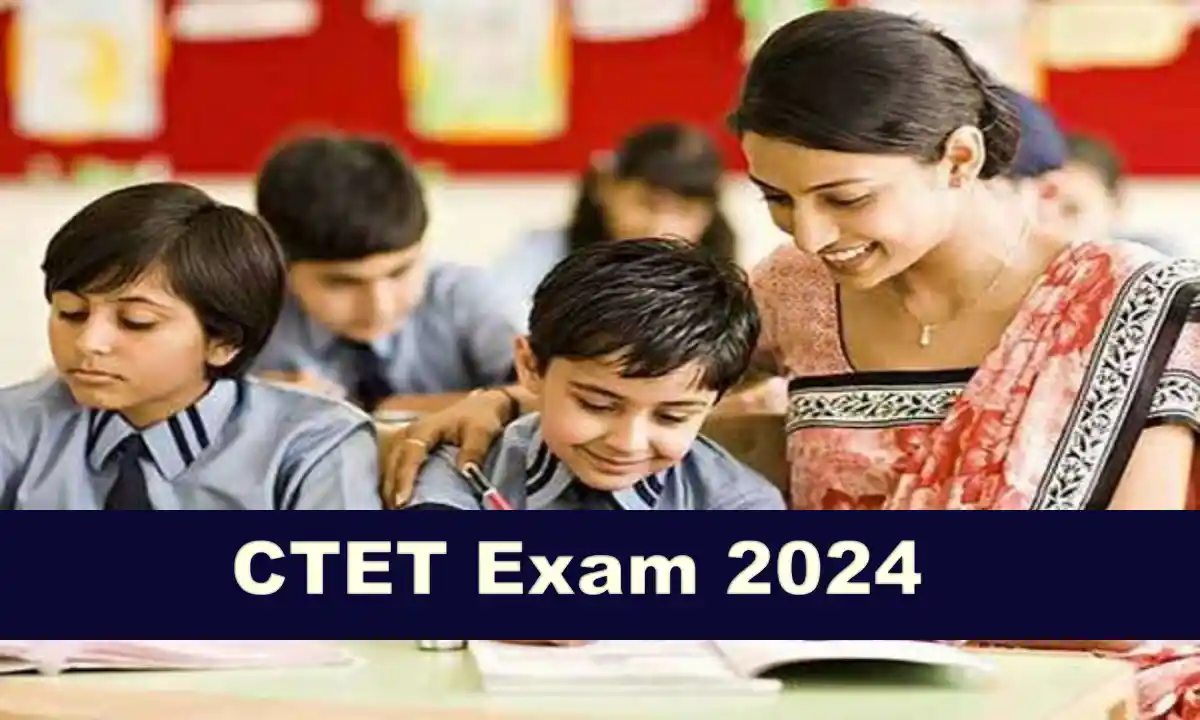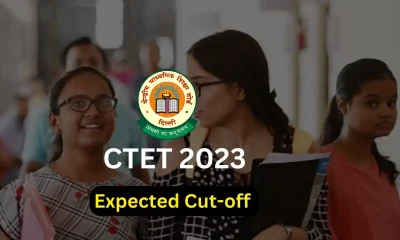CTET & Teaching
CTET 2023: क्या आप बता सकते हैं? विगत वर्ष पूछे गए CDP के इन सवालों के सही जवाब!
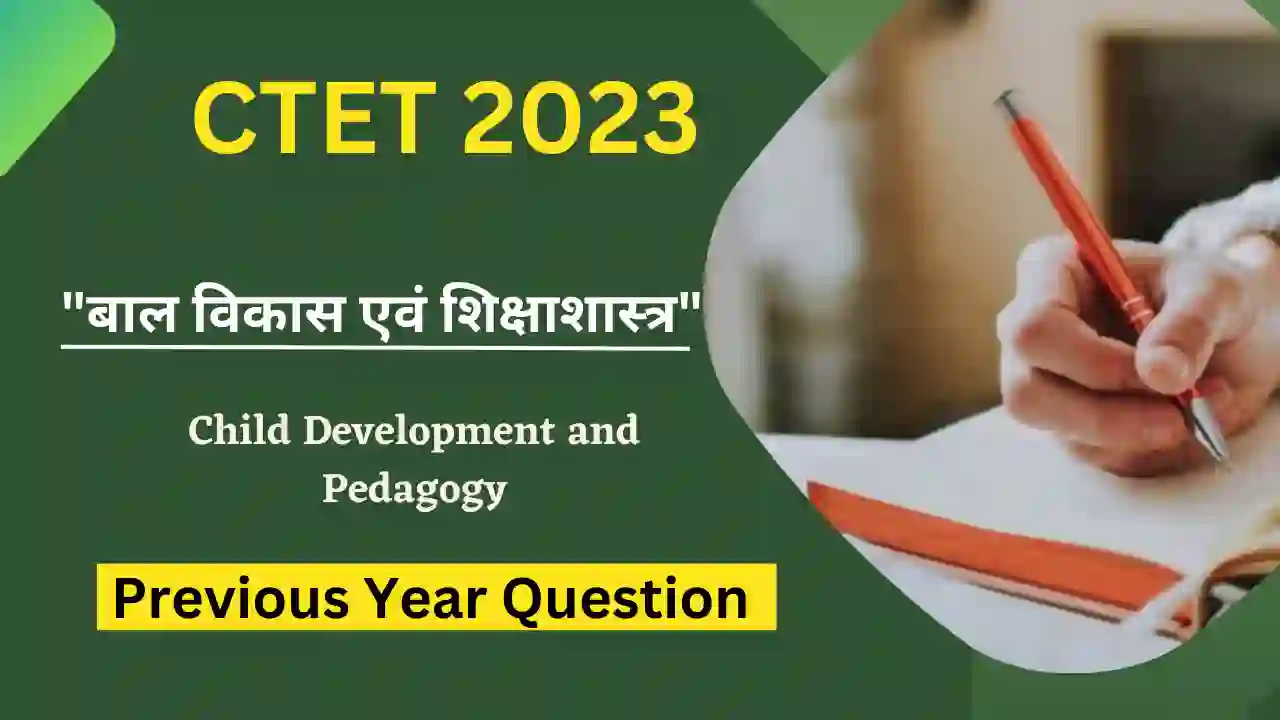
CTET CDP Previous Year Questions: लगभग 1 माह के पश्चात आयोजित होने वाली सीटेट परीक्षा का आयोजन केंद्रीय माध्यमिक शिक्षा बोर्ड के द्वारा ऑनलाइन सीबीटी मोड में किया जाएगा। जिसमें देशभर से लाखों युवा अभ्यर्थी शिक्षक बनने की चाह लिए इस परीक्षा में शामिल होंगे। बता दें कि यह एक श पात्रता परीक्षा है, जिसमें क्वालीफाई होने पर अभ्यर्थियों को एक स्कोरकार्ड दिया जाता है। जिसके माध्यम से अभ्यर्थी विभिन्न राज्यों में संचालित केंद्रीय विद्यालयों में होने वाली शिक्षकों की नियुक्ति प्रक्रिया में आवेदन करने के पात्र होते हैं। इसके साथ ही निजी एवं सरकारी स्कूलों में होने वाली शिक्षकों की भर्ती प्रक्रिया में भी सीटेट परीक्षा में सफल अभ्यर्थियों को प्राथमिकता दी जाती है।
यदि आप भी जुलाई में होने वाली सीटेट परीक्षा में सम्मिलित होने जा रहे हैं, तो इस आर्टिकल में हम आपके लिए विगत वर्ष में पूछे गए बाल विकास एवं शिक्षाशास्त्र के कुछ चुनिंदा सवाल लेकर आए हैं, जोकि आपको एक बार अवश्य पढ़ लेना चाहिए ताकि आप जान पाए कि इस लेवल के प्रश्न परीक्षा में पूछे जाते हैं।
पिछली वर्ष में पूछे गए बाल विकास की कुछ ऐसे प्रश्न—Child Development and Pedagogy old Questions CTET Exam
1. How can a teacher create an inclusive environment for learners from different caste groups in classroom?/एक कक्षा में अध्यापिका भिन्न जातियों के समूह वाले अधिगामकर्ताओं के लिए समावेशी वातावरण की रचना कैसे कर सकती है?
(i) By reflecting on her own stereotypes and beliefs that constraint learning experiences of children./अपनी उन अवधारणाओं और पूर्वाग्रहों पर चिंतन करके जो बच्चों के शैक्षिक अनुभव को सीमित करते हैं।
(ii) Include diversity of children’s experiences in classroom./कक्षा में बच्चों के अनुभवों की विविधता को सम्मिलित करके।
(iii) Create an institutional ethos that has a strong emphasis on equality. /संस्था में समानता मूल संस्कृति पर बल देकर।
(iv) Encourage children to adapt to existing standard curriculum. /छात्रों को प्रोत्साहित करके कि वे स्वयं को मानकीय पाठ्यक्रम के अनुकूल बना लें।
A. (i), (ii), (iii)
B. (i), (ii), (iv)
C. (i), (iii), (iv)
D.(i), (iii)
Ans- A
2. Ramneek has a student with visual impairment in her class. In this context, what instructional adaptations should she make in an inclusive classroom?/रमनीक की कक्षा में एक दृष्टि बाधित छात्र है। एक समावेशित कक्षा में इस संदर्भ में उसे क्या निर्देशात्मक समायोजन करने चाहिए?
A. Using a variety of visual presentations/विविध प्रकार के दर्शनात्मक प्रस्तुतीकरण देकर
B. Providing lot of print books/मुद्रित पुस्तकें उपलब्ध कराकर
C. Making use of tactile materials such as three dimensional maps and charts/त्रिविमीय नक्शे और चार्ट जैसे स्पार्शिकि का प्रावधान करके
D. Giving lot of small print worksheets/छोटी मुद्रा वाली प्रदान करके
Ans- C
3. Reena always thinks of varied solutions for any problem given in the class. This is a characteristic of -/रीना कक्षा में दी गई किसी भी समस्या को सुलझाने के लिए अलग-अलग तरकीबों से बारे में सोचती है। यह निम्न में से किसका प्रतीक है।
A. Mental impairment/मानसिक क्षति
B. Low comprehension/कम परिज्ञानता बोधगम्यता
C. Convergent thinking/अभिसारी सोच
D. Divergent thinking/अपसारी सोच
Ans- D
4. Raju writes ’61’ as ’16’ and often gets confused between the letters ‘b’ and ‘d’. These are primary characteristics of -/राजू ’61’ के स्थान पर ’16’ लिखता है और ‘b’ और ‘d’ अक्षरों में अकसर भ्रमित होता है। यह किसके प्राथमिक लक्षण हैं?
A. Dyslexia/पठन वैकल्य
B. Autism spectrum disorder/स्वलीनता क्रम विकार
C. Learned helplessness/शैक्षिक असहायता
D. Dysgraphia/लेखन वैकल्य
Ans- A
5. Specially abled children in an inclusive classrooms can benefit from -/एक समावेशी कक्षा में विशेष’ बच्चों को किस प्रकार सहायता मिल सकती है?
(i) Setting of Individualized goal/व्यक्ति लक्ष्यों का निर्धारण
(ii) Competitive ethos/प्रतिस्पर्धात्मक संस्कृति
(iii) Cooperative learning/सहयोगात्मक अधिगम
(iv) Standard instruction/मानकीकृत निर्देश
A. (i), (iv)
B. (ii), (iv)
C. (i), (ii)
D. (iii), (iv)
Ans- C
6. How are children understood in a constructivist frame?/एक संरचनावादी प्ररिप्रेक्ष्य में बच्चों को किस प्रकार समझा जाता है?
A. Passive beings/निष्क्रिय प्राणी के रूप में।
B. Miniature adults/छोटे वयस्कों के रूप में।
C. As being born evil who have to be civilized/दुष्ट जीव के रूप में जिन्हें सभ्य बनाने की ज़रूरत है।
D. As being born with a curiosity to explore the world/अपने पर्यावरण को समझने की उत्सुकता लिए हुए।
Ans- D
7. Which of the following statements about children’s ‘failure’ is correct?/बच्चों की असफलता के संदर्भ में निम्न में से कौन-सा कथन सही है?
A. Child’s failure can always be attributed to genetic defects./बच्चों की असफलता का गुणरोपण हमेशा उनके (आनुवांशिक दोषों को किया जा सकता है।
B. Child’s failure is a reflection of the system’s inability to cater to her individual needs./बच्चों की असफलता का कारण व्यस्था द्वारा बच्चों की व्यक्तिगत ज़रूरतों को अनदेखा करना है।
C. Children whose parents have themselves never been to school are not interested in the education of their children./वे बालक जो कभी स्कूल नहीं गए हैं बच्चों की शिक्षा में रुचि नहीं रखते हैं।
D. Children belonging to marginalized communities are not capable of achieving academic success./हाशिए पर रहने वाले समुदायों के बच्चे अकादमिक सफलता प्राप्त करने में सक्षम नहीं हैं।
Ans- B
8. How can a teacher enhance effective learning in her elementary classroom?/एक शिक्षिका अपनी प्राथमिक कक्षा में अर्थपूर्ण अधिगम को कैसे बढ़ावा दे सकती है?
A. By drill and practice/वेधन तथा अभ्यास द्वारा
B. By encouraging competition/प्रतिस्पर्धा को बढ़ावा देकर
C. By connecting the context to the lives of the students/विषयवस्तु का विद्यार्थियों के जीवन के साथ संबंध स्थापित करके
D. By offering rewards at every step in learning/अधिगम की छोटी-छोटी उपलब्धियों के लिए पुरस्कार देकर
Ans- C
9. Anupama, a science teacher,
often makes linkages in her classrooms with the concepts students are studying in Mathematics. This kind of pedagogy -/अनुपमा अपनी कक्षा में विज्ञान पढ़ाते हुए गणित के संप्रत्ययों के साथ संबंध बनाती है। इस प्रकार का शिक्षा शास्त्र-
A. would help in transfer of learning and promote inter-disciplinarity./अधिगम के स्थानांतरण और अंत: विषयात्मक अधिगम को बढ़ावा देगा।
B. would hinder in acquisition of knowledge./ज्ञान के अर्जन में रुकावट उत्पन्न करेगा।
C. would hinder learning as it would increase the students burden./अधिगम के रुकावट उत्पन्न करेगा क्योंकि यह छात्रों के बोझ को बढ़ाएगा।
D. would promote misconceptions amongst children./छात्रों में भ्रांतियों को बढ़ावा देगा।
Ans- A
10. The information related to the procedure of riding a bike, folding laundry and experience of climbing a tree as a 7 years old is stored in –
ये जानकारियाँ किस स्मृति में संगठित होती हैं?
i. बाइक की सवारी करने की प्रक्रिया ii. धुले कपड़ों को तह करने की प्रक्रिया
ii. 7 वर्ष की उम्र में एक पेड़ पर चढ़ने का अनुभव
A. short term memory/अल्प अवधि स्मृति
B. long term memory/दीर्घ अवधि स्मृति
C. sensory memory/संवेदिक
D. working memory/कार्यकारी
Ans- B
11. Which of the following statements about understanding of children’s errors is NOT correct? /निम्नलिखित कथनों में से कौन-सा कथन बच्चों की त्रुटियों को समझने के लिए सही नहीं है?
A. It helps in assigning grades and positions to the students in class./यह कक्षा में छात्रों के ग्रेड और पदों को निर्धारित करने में मदद करता है।
B. It makes the teacher aware of conceptual understanding of children./शिक्षक को छात्रों की अवधाराणात्मक समझ से अवगत कराता है।
C. Understanding of errors is meaningful in teaching learning process as natural part of learning./शिक्षण अधिगम प्रक्रिया में त्रुटि की समझ सार्थक है क्योंकि यह अधिगम प्रक्रिया का सहज हिस्सा है।
D. It gives insight into children’s thinking/यह बच्चों की सोच में अंतर्दृष्टि प्रदान करता है।
Ans- A
12. Which type of motivation is associated with activities that are enjoyable or satisfying in themselves? /किस प्रकार की प्रेरणा उन गतिविधियों से जुड़ी है जो अपने-आप में आनंदायक व संतोषजनक है?
A. Intrinsic motivation/आंतरिक अभिप्रेरण
B. Trait motivation/गुण विषयक अभिप्रेरणा
C. Extrinsic motivation/बाह्य अभिप्रेरणा
D. State motivation/स्थिति विषयक अभिप्रेरण
Ans- A
13. Teacher’s expectations from her students -/शिक्षिका की अपने विद्यार्थियों से अपेक्षाएँ अपेक्षाओं—
A. have a significant impact on their learning./उनके अधिगम पर महत्वपूर्ण प्रभाव डालती हैं।
B. should not he correlated with the students’ learning./का विद्यार्थियों के अधिगम से कोई सह- संबंध नहीं है।
C. do not have any effect on the students’ learning and self-efficacy. /विद्यार्थियों के अधिगम और उनकी स्वयं की क्षमता पर किसी प्रकार का प्रभाव नहीं डालती हैं।
D. are a sole determinent of the childrens’ learning./बच्चों के अधिगम के लिए एक मात्र निर्धारक हैं।
Ans- A
14. A child-centered classroom can be created by – /’बाल केन्द्रित’ कक्षा का सृजन कैसे किया जा सकता है?
A. providing timely feedback to the learners about their performance./शिक्षार्थियों को उनके निष्पादन के बारे में समय पर प्रतिपुष्टि देकर।
B. discouraging questions and keeping learners passive. /विद्यार्थियों को प्रश्न पूछने से हतोत्साहित करके और उन्हें निष्क्रिय रखकर ।
C. providing frequent tests and keeping learners in an intermittent state of fear./बारम्बार परीक्षा लेकर और शिक्षार्थियों को बीच-बीच में की अवस्था में रखकर ।
D. promoting competition between learners./विद्यार्थियों में प्रतिस्पर्धा प्रोत्साहित करके।
Ans- A
15. National Education Policy 2020 proposes -/राष्ट्रीय शिक्षा नीति 2020 क्या प्रस्तावित) करती हैं?
(i) reduction in content of school curriculum./विद्यालय की पाठ्यचर्या की विषयवस्तु में कटौती।
(ii) increased flexibility of school curriculum./विद्यालय की पाठ्यचर्या के लचीलेपन में वृद्धि।
(iii) emphasis on rote learning./रटन्त अधिगम को महत्व देना ।
(iv) emphasis on critical thinking./विवेचनात्मक चिंतन को महत्व देना ।
A. (ii), (iv)
B. (i), (ii), (iii)
C. (i), (ii), (iv)
D. (ii), (iii), (iv)
Ans- A
Read More:-
CTET July 2023: ‘पर्यावरण पेडागॉजी’ के Quiz टेस्ट के माध्यम से जाने सीटेट परीक्षा की तैयारी का स्तर!
परीक्षा से जुड़ी सभी नवीनतम अपडेट तथा Notes प्राप्त करने के लिए आप हमारे टेलीग्राम चैनल के सदस्य जरूर बने जॉइन लिंक नीचे दी गई है.
CTET
CTET 2024 Answer Key: जल्द जारी होगी आंसर-की, जाने नई अपडेट
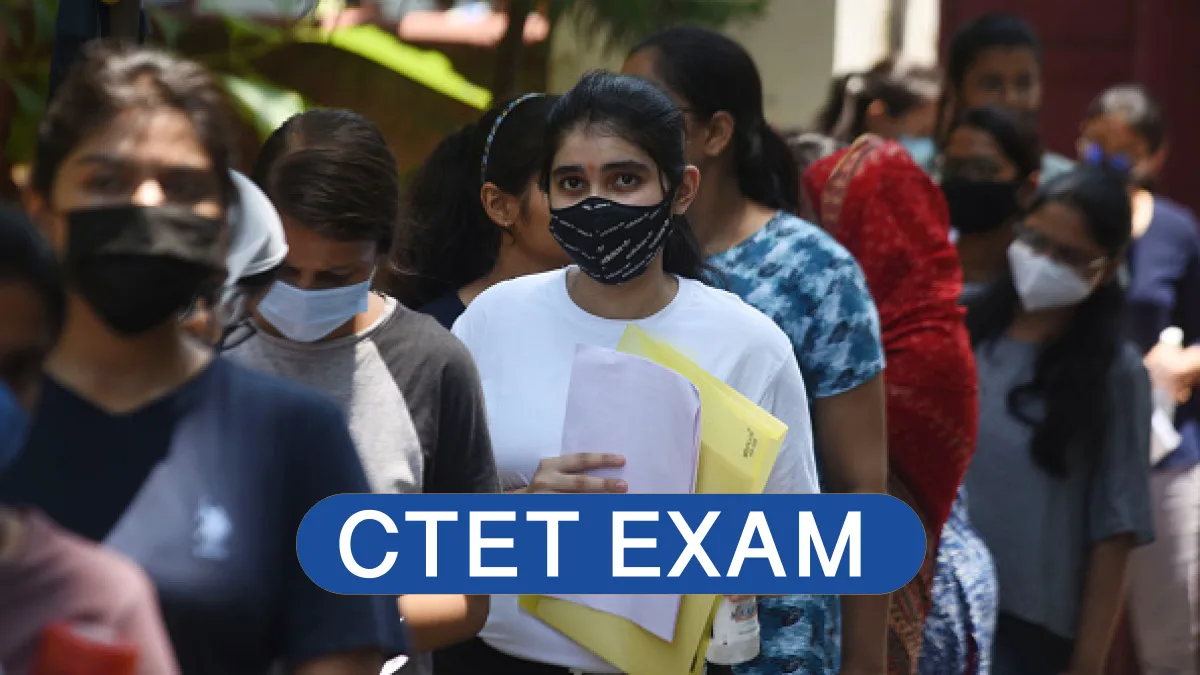
CTET 2024 Answer Key Download: केंद्रीय शिक्षक पात्रता परीक्षा (CTET), देशभर में निर्धारित परीक्षा केंद्रों पर 21 जनवरी 2024 को आयोजित की जा चुकी है। परीक्षा समाप्त होने के बाद, अब उम्मीदवार प्रोविजनल आंसर-की जारी होने का इंतजार कर रहे हैं। नवीनतम मीडिया रिपोर्ट्स के अनुसार, केंद्रीय माध्यमिक शिक्षा बोर्ड (CBSE) के अनुसार उत्तर कुंजी का जनवरी के अंतिम सप्ताह या फरवरी के पहले सप्ताह में जारी की जा सकती है। हालांकि, अभी तक सीबीएसई की ओर से इस बारे में कोई आधिकारिक सूचना नहीं दी गई है।
आंसर-की को CBSE की आधिकारिक वेबसाइट ctet.nic.in पर जारी किया जाएगा, जहां से उम्मीदवार अपनी लॉगिन क्रेडेंशियल दर्ज करके इसे डाउनलोड कर सकते हैं।
CTET 2024: शिकायतों के लिए निर्धारित महत्वपूर्ण तिथियाँ
जिन उम्मीदवारों ने CTET परीक्षा में भाग लिया है, वे आंसर-की डाउनलोड करके अपने उत्तरों की मिलान कर सकते हैं। इसके साथ ही यदि किसी उत्तर से संतुष्टि नहीं होती है, तो अभ्यर्थी उस पर निर्धारित तिथियों में ऑब्जेक्शन विंडो के माध्यम से अपनी आपत्ति दर्ज कर पाएँगें। आपत्ति दर्ज करने के लिए उम्मीदवारों को प्रति प्रश्न निर्धारित शुल्क का भुगतान करना होगा।
आपकी द्वारा दर्ज की गई आपत्ति का समाधान सीबीएससी द्वारा गठित विशेषज्ञों की टीम द्वारा होगा। यदि आपका दावा सही पाया जाता है, तो आपको उसके लिए अंक प्रदान किया जाएगा।
CTET Answer Key 2024: कैसे डाउनलोड करें आंसर-की
Step:1 CBSE CTET उत्तर कुंजी डाउनलोड करने के लिए, सबसे पहले आपको आधिकारिक वेबसाइट ctet.nic.in पर जाना होगा
Step:2 अब वेबसाइट पर दिखाई दे रहे CTET Answer Key 2024 विकल्प पर क्लिक करें।
Step:3 अब आपको एप्लीकेशन नंबर और जन्म की तारीख दर्ज करके लॉगिन करना होगा इसके बाद Asnswer Key स्क्रीन पर प्रदर्शित हो जाएगी।
CTET & Teaching
शिक्षक पात्रता परीक्षा 2024: ‘घर और आवास’ से जुड़े ये सवाल परीक्षा में दिलायेंगे 2 से 3 अंक, अभी पढ़ें
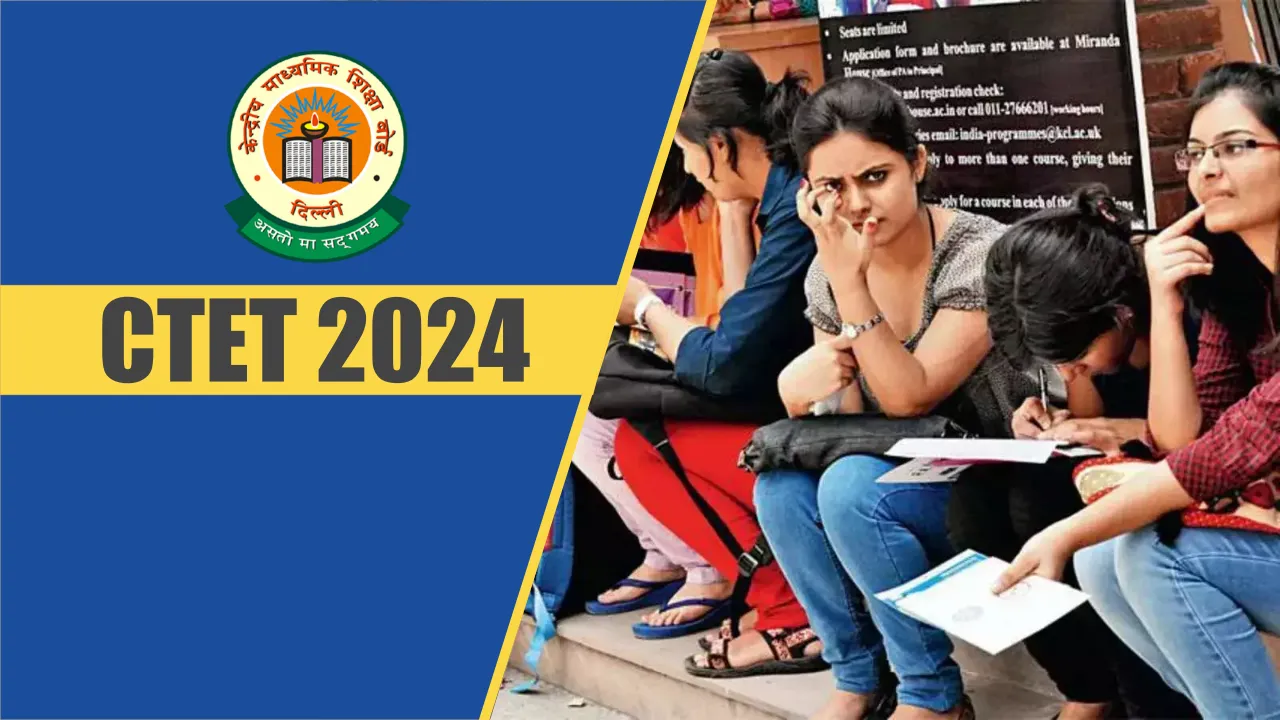
Home and Shelter Based MCQ For CTET 2024: केंद्रीय माध्यमिक शिक्षा बोर्ड के द्वारा आयोजित की जाने वाली सीटेट परीक्षा 21 जनवरी 2024 को आयोजित की जानी है। यदि आप भी इस परीक्षा में शामिल होने जा रहे हैं, तो आपके लिए यहां पर हम पर्यावरण एनसीईआरटी के अंतर्गत घर और आवास से संबंधित परीक्षा में पूछे जाने वाले संभावित प्रश्न इस आर्टिकल में आपके साथ शेयर कर रहे हैं।
इस टॉपिक से एक से दो अंकों के प्रश्न हमेशा से परीक्षा में पूछे जाते रहे हैं। लिहाजा आगामी सीटेट परीक्षा में इस टॉपिक से प्रश्न पूछे जाने की प्रबल संभावना है। ऐसे में अभ्यर्थियों को चाहिए कि वह नीचे दिए गए प्रश्नों का अध्ययन ध्यान पूर्वक करें ताकि परीक्षा में बेहतर परिणाम प्राप्त हो सके।

पर्यावरण के अंतर्गत घर और आवाज से जुड़े महत्वपूर्ण प्रश्न—Home and Shelter Based Important MCQ For CTET Exam 2024
Q.1 कोई पक्षी पेड़ की ऊँची डाल पर अपना घोंसला बनाता है। यह पक्षी हो सकता है | / A bird builds its nest at the top of the tree. It can be a bird.
(a) शकरखोरा / sugar cane
(b) कलचिडी / Kalchidi
(c) कौआ /Crow
(d) फाखता /
Ans-c
Q.2 निम्नलिखित में से कौन-सा पक्षी कैक्टस पोधे के कॉटों के बीच अपना घोंसला बनाता है ?
(a) फाख्ता
(b) शकरखोरा
(c) बया
(d) कलचिडी
Ans-b
Q.3 ग्रामीण क्षेत्रों में, गाय के गोबर में मिट्टी के घरों की दीवारों और फर्श को लीपा जाना हैं उन्हें
(a) फर्श को प्रकृतिक रंग देने के लिए
(b) कीड़ो को दूर रखने के लिए
(c) चिकना और माफ बनाने के लिए
(d) खुरदरा बनाकर घर्षण बढाने के लिए
Ans-b
Q.4 निम्नलिखित में से कौन-सा कीट मधुमक्खीयाँ की भाँती कॉलोनी (बस्ती) में एक साथ नहीं रहता है ? / Which of the following insects does not live together in a colony (colony) like bees?
(a) तेतैया दर्श
(b) चिंटी
(c) दीमक
(d) मकड़ी
Ans-d
Q.5 कुत्ता मछली का आवास है
(a) नदी
(b) तालाव
(c) झील
(d) समुद्र
Ans-d
Q.6 निम्नलिखित में से लेह और लद्दाख के मकानों की विशेषताएँ चुनिए/Select the characteristics of the houses in Leh and Ladakh from the following.
1. पेड़ के टनों से बनी लकड़ी की ढालू छतें / sloping wood roofs made of tree tones
2. निचली मंजिल में कोई खिडकी नहीं/ no windows in the lower floor
3. पत्थर, मिट्टी और चूने से बनी दीवारें/ stone, clay and lime walls
4. लकड़ी के फर्श wooden floor
(a) 3,4,1
(b) 1,2,4
(c) 1,2,3
(d) 2, 3, 4
Ans-d
Q.7 नीचे दिया गया पैराग्राफ पढिए, जिसे गाँव के एक छात्र ने अपने घर के विषय में लिखा है / Read the following paragraph, written by a student of the village about his house
“में गाँव से आया है। हमारे गाँव में अत्यधिक वर्षा होती है। इसलिए हमारे घर धरती से लगभग 10 से 12 फुट (3 से 3.5 मी) ऊंचे बने होते हैं। इन्हें मजबूत बांस के खम्भों पर बनाया जाता हैं। ये घर अन्दर से भी लकड़ी के बने होते हैं।” यह गाँव होना चाहिए
(a) आंध्र प्रदेश में
(b) असोम में
(c) तमिलनाडु में
(d) उत्तराखंड में
Ans-b
Q.8 एस्किमो अपने घर ‘इग्लू’ का निर्माण बर्फ से करते है। इसका क्या कारण है ? / The Eskimos build their home ‘Igloo’ out of ice. What is the reason for this?
(a) बर्फ ठंडी हवा और पानी को अन्दर नहीं आने देता / Ice does not allow cold air and water to enter
(b) बर्फ की दीवारों के बीच मौजूद हवा अन्दर की गर्मी को बाहर जाने से रोकती है / The air between the walls of ice prevents the internal heat from going out.
(c) वर्फ मुक्त में मिलती है, अन्य सामग्री की कीमत अधिक होगी / Comes in ice free other ingredients will cost more
(d) ध्रुवीय क्षेत्रों में केवल बर्फ की उपलब्ध है || Only ice is available in the polar regions.
Ans-c
Q.9 ग्रामीण क्षेत्र के मकानों के ढाँचे वहाँ की जलवायु (मौसम) की स्थिति से सम्बन्धित होते हैं। एक गाँव के मकानों के लक्षण नीचे दिए गए हैं / The structure of the houses in the rural area is related to the climate (weather) condition there. Characteristics of houses in a village are given Delow
1. मकान मजबूत बांस के खम्भों पर बने होते हैं
2. अन्दर से भी मकान लकड़ी से ही बने होते हैं
3. मकान जमीन से लगभग 3 मी से 3.5 मी ऊँचाई पर बने होते हैं मकानों की छते ढालू होती हैं।
यदि इस गाँव में भारी वर्षा होती है, तो यह गाँव किस राज्य में होना चाहिए ?
(a) असोम
(b) उत्तर प्रदेश
(c) राजस्थान
(d) बिहार
Ans-a
Q.10 घरों के नीचे दी गई विशिष्टताओं पर विचार कीजिए
A. निचली मंजील में कोई खिड़की नहीं । B. पेड़ के तनों की लकड़ी बनी ढालू छतें |
C. पत्थर के खम्भों पर जमीन से लगभग 10 – 12 ऊँचाई पर बने घर ।
D. पत्थर, गारा और चूने से बनी मोटी दीवारें
E. लकड़ी के फर्श ।
लेह और लद्दाख के घरों में ऊपर दी गई कौन-कौन विशिष्टाएँ पाई जा सकती हैं ?
(a) B. C. D
(b) C. D. A
(c) A, D, E
(d) A, B, C
Ans-c
Q.11 निम्नलिखित का अध्ययन कीजिए।
कौआ पेड़ की ऊँची डाल पर अपना घोंसला बनाता है। इस घोंसले को बनाने में के प्रकार क चीजे, यहाँ तक की लड़की की शाखाएं और लोहे के तार भी होते हैं। एक चालाक पक्षी भी है ज अपना घोंसला नहीं बनाता और कीए के घोंसले में अंडे दे देता है। वेचारा कौआ अपने अण्डों के साथ इन अण्डों को भी देता है। The crow builds its nest on the top of the tree. There are types of things to make this nest, even the chick branches and iron wire. There is also a clever bird that does not build its nest and lays eggs in the crow’s nest. Poor crow gives his eggs along with his eggs.
यह पक्षी कोन सा है?
(a) कलचिडी
(b) बसंत गौरी
(c) कोयल
(d) शकरखोरा
Ans-c
Q.12 निम्नलिखित में से कौन-सी सामग्री घर बनाने में काम नहीं आती है ? Which of the following materials does not work in home construction?
(a) सीमेंट
(b) लोहा
(c) पत्थर
(d) स्कूटर
Ans-d
Q.13 बंदर, शेर तथा चूहे के घर क्रमश: हैं
(a) घोंसला, पेड़ एवं गुफा
(b) गुफा, बिल एवं पेड़
(c) पेड़, गुफा एवं बिल
(d) बिल, पेड़ एवं गुफा |
Ans-c
Q.14 निम्नलिखित में से कौन-सा पक्ष स्वयं के नीड़ का निर्माण नहीं करता है ? Which of the following sides does not form its own needle?
(a) कौआ/crow
(b) कोयल
(c) गौरया / sparrow
(d) बुलबुल
Ans-b
Q.15 ग्रामीण में गोबर का प्रयोग झोपड़ी की दीवारों एवं फर्श को लीपने के लिए किया जाता है, जिससे / In rural, cow dung is used to plunge the walls and floors of the hut,
(a) वे चिकनी रहें / they be smooth
(b) घर्षण हेतु खुरदरी हो जाएँ / become rough for friction
(c) दीवारों एवं फर्श का प्राकृतिक रंग हो/ the natural color of the walls and floor
(d) कीट दूर रहें / keep insects away
Ans-d
Read More:-
CTET JAN 2024: लेव वायगोत्स्की के सिद्धांत से सीटेट एग्जाम में बनने वाले महत्वपूर्ण सवाल, यहां पढ़िए
CTET & Teaching
CTET 2024: ‘RTE Act 2009’ से जुड़े परीक्षा में पूछे जाने वाले संभावित प्रश्न यहां पढ़ें!
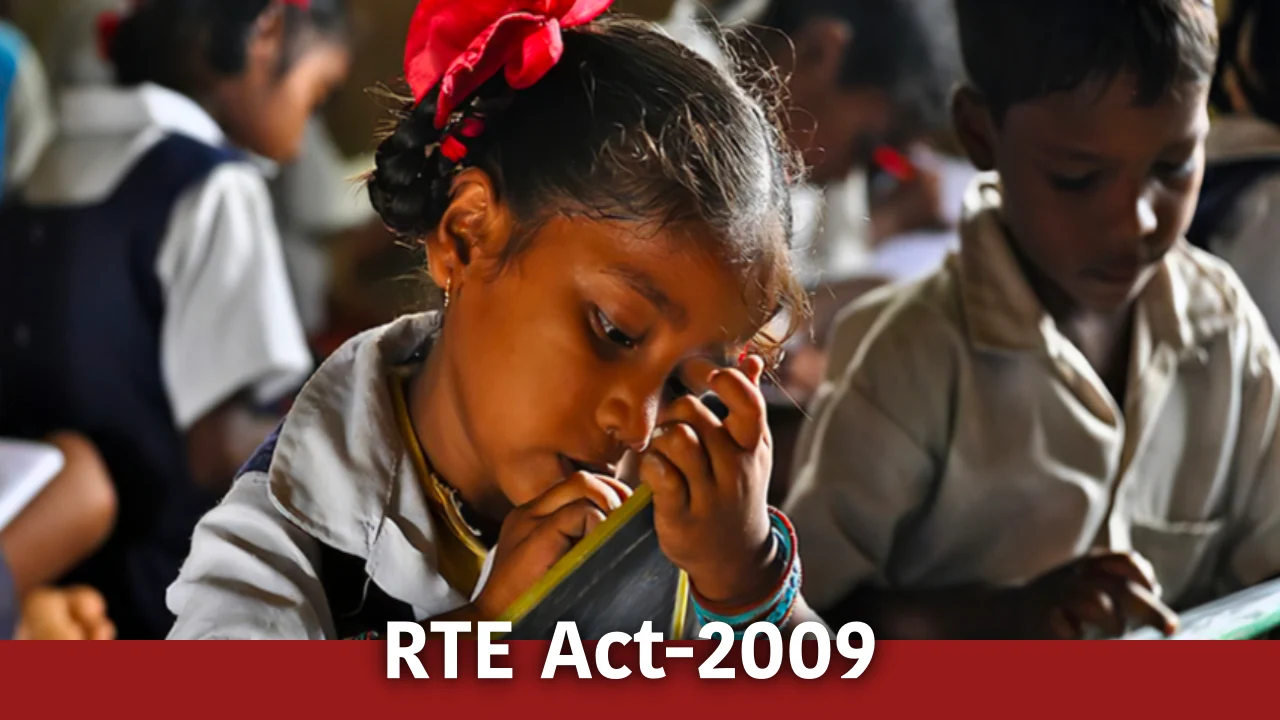
MCQ on RTE Act 2009 For CTET 2024: केंद्रीय माध्यमिक शिक्षा बोर्ड की ओर से आयोजित की जाने वालीसीटेट परीक्षा 21 जनवरी 2024 को देश भर के विभिन्न परीक्षा केदो पर ऑफलाइन मोड में आयोजित की जाएगी। बता दे कीइस परीक्षा का आयोजन वर्ष में दो बार किया जाता है। जनवरी माह में होने वाली केंद्रीय शिक्षक पात्रता परीक्षा में देशभर से लाखों की संख्या में अभ्यर्थी सम्मिलित होने वाले हैं। यदि आप भी इस परीक्षा का हिस्सा बनने जा रहे हैं, तो इस आर्टिकल में हम आपके लिए परीक्षा में पूछे जाने वाले सबसे महत्वपूर्ण टॉपिक शिक्षा का अधिकार अधिनियम 2009 से जुड़े कुछ बेहद ही रोचक प्रश्न लेकर आए हैं। जो कि हर वर्ष परीक्षा में पूछे जाते रहे हैं , लिहाजा अभ्यर्थियों को इन प्रश्नों का अध्ययन ध्यान पूर्वक करना चाहिए। जिससे की परीक्षा में बेहतर परिणाम प्राप्त हो सके।
शिक्षा का अधिकार अधिनियम 2009 से संबंधित महत्वपूर्ण प्रश्न—RET Act 2009 Important MCQ Questions For CTET Exam
1. RTE 2009 की किस धारा के अनुसार सरकारी विद्यालयों में कुल स्वीकृत पदों में से 20% से अधिक खाली नहीं होंगे?According to which section of RTE-2009, not more than 20% of the sanctioned posts in government schools will be vacant?
(a) धारा-26
(b) धारा-27
(c) धारा-28
(d) इनमें से कोई नहीं
Ans- d
2. यदि किसी विद्यालय में 151 विद्यार्थी है, तो प्रधानाध्यापक सहित अध्यापकों की संख्या कितनी होगी ?/ If there are 151 students in a school, then what will be the number of teachers including the headmaster?
(a) 4
(b) 5
(c) 6
(d) 7
Ans- c
3. RTE 2009 की किस धारा में प्राथमिक शिक्षा के सार्वभौमिकीकरण करने पर बल दिया गया है?/ In which section of RTE-2009 emphasis has been laid on universalization of primary education?
(a) धारा-4
(b) धारा-10
(c) धारा-14
(d) धारा-18
Ans- a
4. भारत में निःशुल्क एवं अनिवार्य शिक्षा की माँग सर्वप्रथम किसने की?/ Who first demanded free and compulsory education in India?
(a) महात्मा गाँधी
(b) बाल गंगाधर तिलक
(c) दादा भाई नौरोजी
(d) गोपाल कृष्ण गोखले
Ans- d
5. RTE 2009 कब लागू किया गया-/ When RTE – 2009 was implemented –
(a) 1 अप्रैल, 2009
(b) 1 अप्रैल, 2010
(c) 1 अप्रैल, 2012
(d) 1 अप्रैल, 2016
Ans- b
6. शिक्षा का अधिकार अधिनियम 2009 लागू नहीं होता / Right to Education Act 2009 does not apply
(a) निःशक्त बच्चे
(b) आयु वर्ग के बच्चे
(c) 14-18 वर्ष के आयु के बच्चे
(d) बच्चों की नियमित उपस्थिति
Ans- c
7. RTE-2009 में एक अध्यापक को निम्न में से किस दायित्व को पूरा करना होगा?/ In RTE-2009 a teacher has to fulfil which of the following responsibilities?
(a) विद्यालय में नियमित रूप से समय पर उपस्थित होना होगा
(b) पाठ्यक्रम का संचालन पूरा करना होगा
(c) सम्पूर्ण पाठ्यक्रम को निर्धारित समय पर पूरा करना होगा
(d) इनमें से सभी
Ans- d
8. नि: शुल्क एवं अनिवार्य शिक्षा का बालकों का अधिकार, 2009 के अन्तर्गत, | किसी भी अध्यापक को निम्न में से किस कार्य के लिये नहीं लगाया जा सकता?/ Under the Right of Children to Free and Compulsory Education, 2009, no teacher can be employed for which of the following work?
(a) दस वर्ष पश्चात होने वाली जनगणना में
(b) आपदा राहत कार्य में
(c) चुनाव सम्बन्धी कार्य में
(d) पल्स पोलियो कार्यक्रम में
Ans- d
9. इनमें से कौन-सा अनुच्छेद यह कहता है कि धर्म और भाषा के आधार पर आधारित अल्पसंख्यक अपने अनुसार शिक्षा संस्थानों को स्थापित कर चला सकते हैं?/ Which of the following Article states that minorities based on religion and language can establish and run educational institutions of their own accord?
(a) अनुच्छेद 29 (1)
(b) अनुच्छेद 29 (2)
(c) अनुच्छेद 30(1)
(d) अनुच्छेद 30 (2)
Ans- c
10. निःशुल्क एवं अनिवार्य शिक्षा का अधिकार 2009′ में ‘अनिवार्य’ शब्द का अर्थ है-/ The word ‘compulsory’ in ‘Right to Free and Compulsory Education 2009 means-
(a) केंद्र सरकार दाखिले, उपस्थिति और प्रारम्भिक शिक्षा की पूर्णता को सुनिश्चित करेगी
(b) उचित सरकारें दाखिले, उपस्थिति और प्रारंभिक शिक्षा की पूर्णता को सुनिश्चित करेगी
(c) दण्डात्मक कार्य से बचने के लिए अपने बच्चों को विद्यालय भेजने के लिए अभिभावकों पर अनिवार्य रूप से जोर डाला गया है।
(d) अनिवार्य शिक्षा सतत् परीक्षण के माध्यम से प्रदान की जाएगी
Ans- d
11. शिक्षा का अधिकार अधिनियम, 2009 के अनुसार विशेष आवश्यकता वाले बच्चों को पढ़ना चाहिए-/According to the Right to Education Act, 2009, children with special needs should read-
(a) व्यावसायिक प्रशिक्षण केंद्रों में जो उन्हें जीवन कौशल सिखाये
(b) घर पर माता-पिता और देखभाल करने वालों के साथ जो उन्हें आवश्यक सहायता उपलब्ध कराएँ
(c) खासतौर पर उन्हीं के लिए बनाए गए विशेष विद्यालयों में
(d) समावेशी शिक्षा व्यवस्था में इस प्रावधान के साथ कि उनकी व्यक्तिगत आवश्यकताओं की पूर्ति की जा सके
Ans- d
12. . भारतीय संविधान के किस अनुच्छेद में 6-14 आयु वर्ग के बच्चों के लिए नि: शुल्क व अनिवार्य शिक्षा का अधिकार शामिल किया गया है?/ In which article of the Indian Constitution, the right to free and compulsory education has been included for the children in the age group of 6-14 years?
(a) अनुच्छेद 26
(b) अनुच्छेद 15
(c) अनुच्छेद 45
(d) अनुच्छेद 21A
Ans- d
13. बच्चों के लिए नि: शुल्क एवं अनिवार्य शिक्षा का अधिकार अधिनियम, 2009 के लिए लागू है-/ The Right of Children to Free and Compulsory Education Act, 2009 is applicable to-
(a) 6-14 वर्ष
(b) 7-13 वर्ष
(c) 5- 11 वर्ष
(d) 6-12 वर्ष
Ans- a
14. निम्नाकिंत में से कौन-सा शिक्षा का अधिकार कानून 2009 के संदर्भ में सही नहीं है ?/ Which of the following is not correct with reference to the Right to Education Act 2009?
(a) इसका भाग (धारा)- 17 बच्चों की दण्ड से रक्षा करता है।
(b) इसका भाग 14 प्रतिव्यक्ति शुल्क संग्रहण का निषेध करता है।
(c) इसके भाग- 21 में विद्यालय प्रबन्धन समिति का प्रावधान है।
(d) इसका भाग. 28 शिक्षकों के निजी ट्यूशन को निषेध करना है।
Ans- b
15. शिक्षा का अधिकार अधिनियम, 2009 को लागू करना क्यों आवश्यक था-/ Why was it necessary to implement the Right to Education Act, 2009-
(a) क्योंकि भारतीय की धारा 45 बालकों की शिक्षा के उद्देश्य को पूरा नहीं करती थी।
(b) बालकों को दिये गये मूल अधिकार के अनुसार गुणवत्ता पूर्ण शिक्षा की संरचना उपलब्ध कराने हेतु।
(c) बालकों की शिक्षा को संविधान में मूल अधिकार बनाने के लिये।
(d) क्योंकि राज्य के लिये नीति निर्देशक तत्व निर्देश थे, उन्हें लागू नहीं किया जा सकता था।
Ans- b
Read More:-
CTET 2024: सीडीपी के इन सवालों को हल कर, जाने! सीटेट परीक्षा में अपनी तैयारी का लेवल
परीक्षा से जुड़ी सभी नवीनतम अपडेट तथा Notes प्राप्त करने के लिए आप हमारे टेलीग्राम चैनल के सदस्य जरूर बने जॉइन लिंक नीचे दी गई है.
-

 Sanskrit5 years ago
Sanskrit5 years agoFruits Name in Sanskrit Language|| फलों के नाम संस्कृत में
-
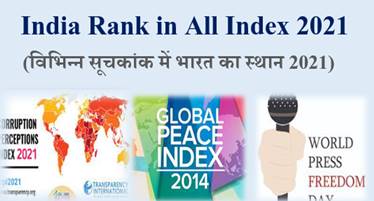
 Current Affairs4 years ago
Current Affairs4 years agoIndia Ranking in Different Indexes 2021 pdf in Hindi
-
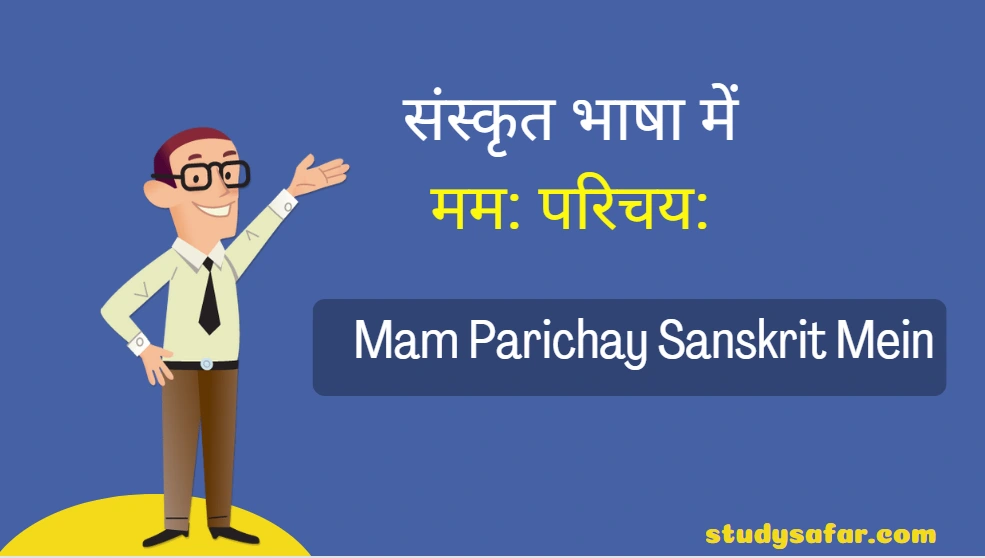
 Uncategorized3 years ago
Uncategorized3 years agoसंस्कृत में मम परिचय | Mam Parichay Sanskrit Mein Class 10th
-
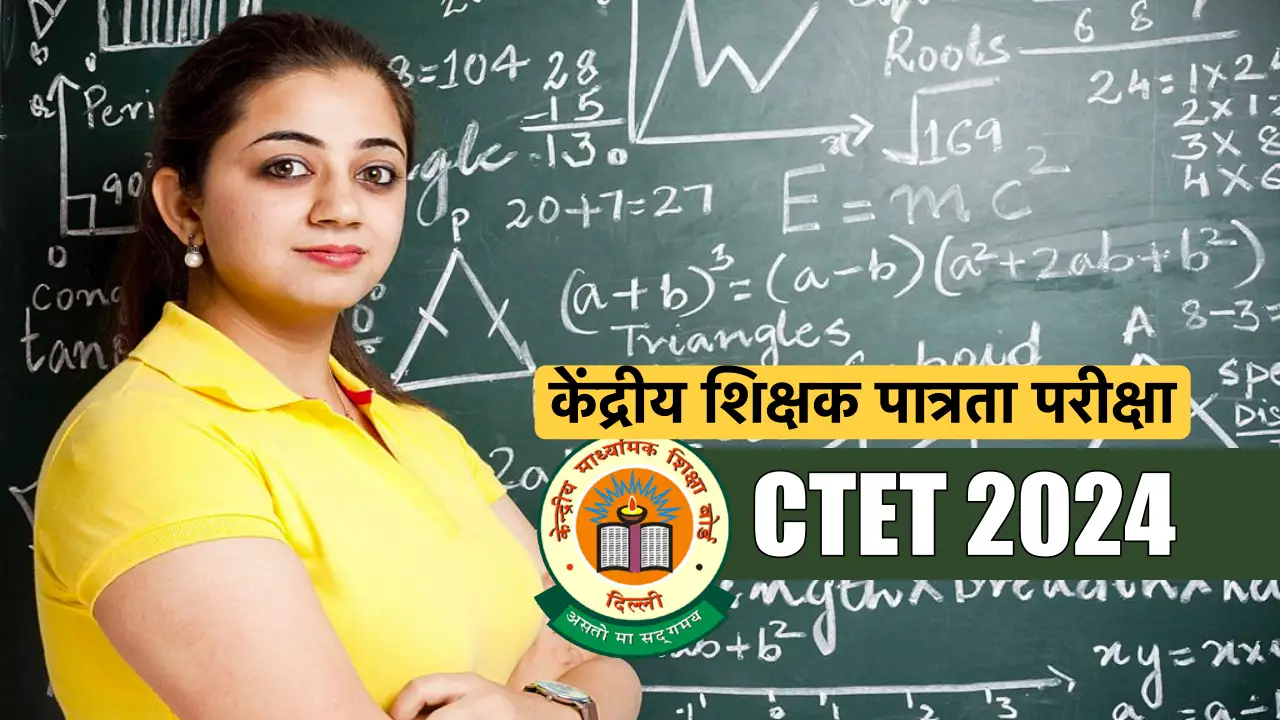
 CTET & Teaching2 years ago
CTET & Teaching2 years agoCTET January 2024: केंद्रीय शिक्षक पात्रता परीक्षा के लिए गणित शिक्षण शास्त्र से जुड़े महत्वपूर्ण प्रश्न
-
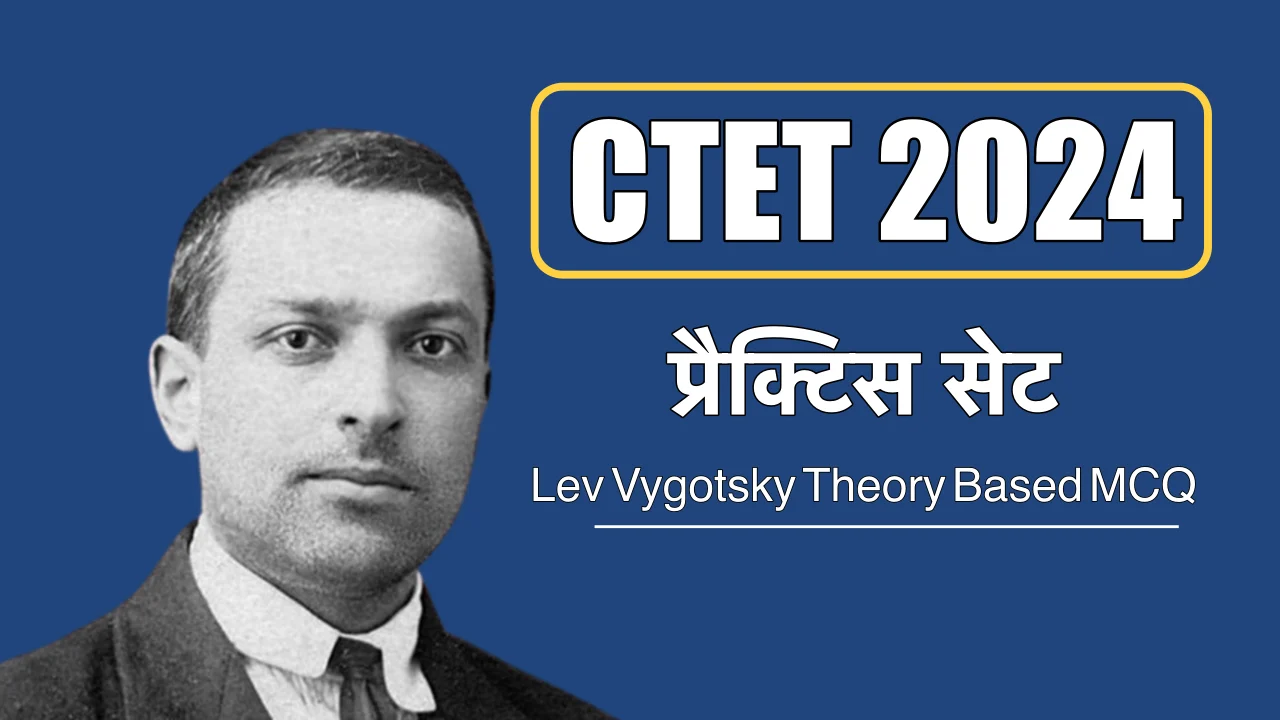
 CTET & Teaching2 years ago
CTET & Teaching2 years agoCTET 2024 Practice Set: लेव वाइगोत्सकी के सिद्धांत से हर बार पूछे जाते है ये सवाल
-
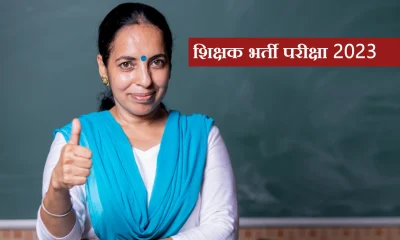
 CTET & Teaching2 years ago
CTET & Teaching2 years agoTET Exams 2023-24: शिक्षक बनाना चाहते है तो अभी पढ़ें पर्यावरण पेडगॉजी ये सवाल
-
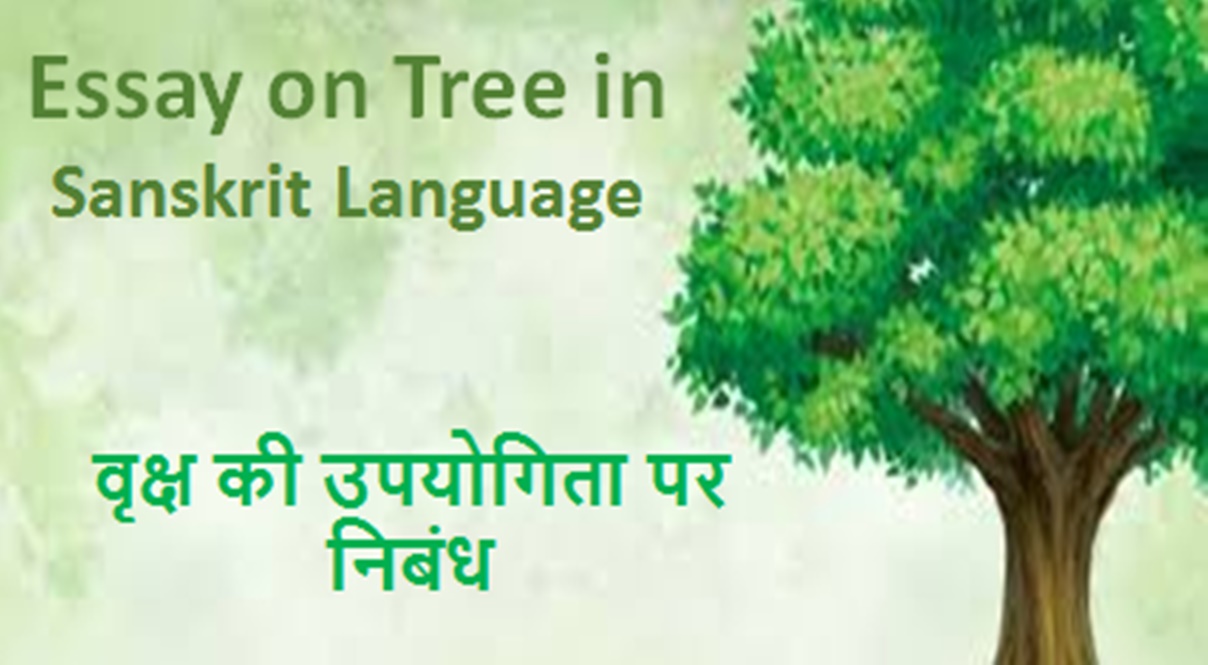
 Sanskrit4 years ago
Sanskrit4 years agoImportance of Trees Essay in Sanskrit
-
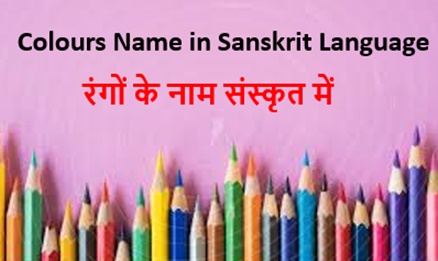
 Sanskrit4 years ago
Sanskrit4 years agoColours Name in Sanskrit Language || रंगों के नाम संस्कृत में

